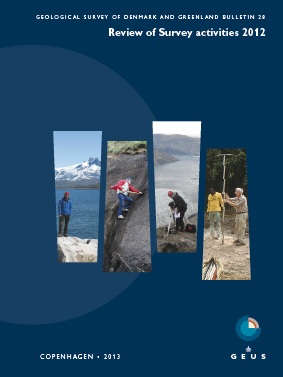
How to Cite
Share
Abstract
Since the late 1960s, it has been known that pink and red corundum occur in the area near Fiskenæsset (Qeqertarsuatsiaat) in southern West Greenland. Corundum is hosted in the Fiskenæsset complex, which is part of the Archaean basement of the North Atlantic Craton. To date, c. 40 corundum localities with a wide range of quality are known in the area – a few localities yield stones of gem quality. The most promising locality, Aappaluttoq, is likely to be mined in the foreseeable future by the Canadian company True North Gems (Figs 1, 2A). Red corundum of gem quality is called ruby; gem quality corundum of other colours (e.g. pink, yellow or blue) is called pink sapphire, yellow sapphire etc., while the blue gem corundum is sapphire. Red, pink and blue corundum are also known in smaller quantities from other areas in Greenland.
How to Cite
Share
Copyright (c) 2013 Nynke Keulen, Per Kalvig

This work is licensed under a Creative Commons Attribution 4.0 International License.
Downloads
Edited by Ole Bennike, Adam A. Garde and W. Stuart Watt
This Review of Survey activities presents a selection of 17 papers reflecting the wide spectrum of activities of the Geological Survey of Denmark and Greenland, from the microscopic to the plate-tectonic level.
The Survey's activities in Denmark and surrounding areas are [...]









